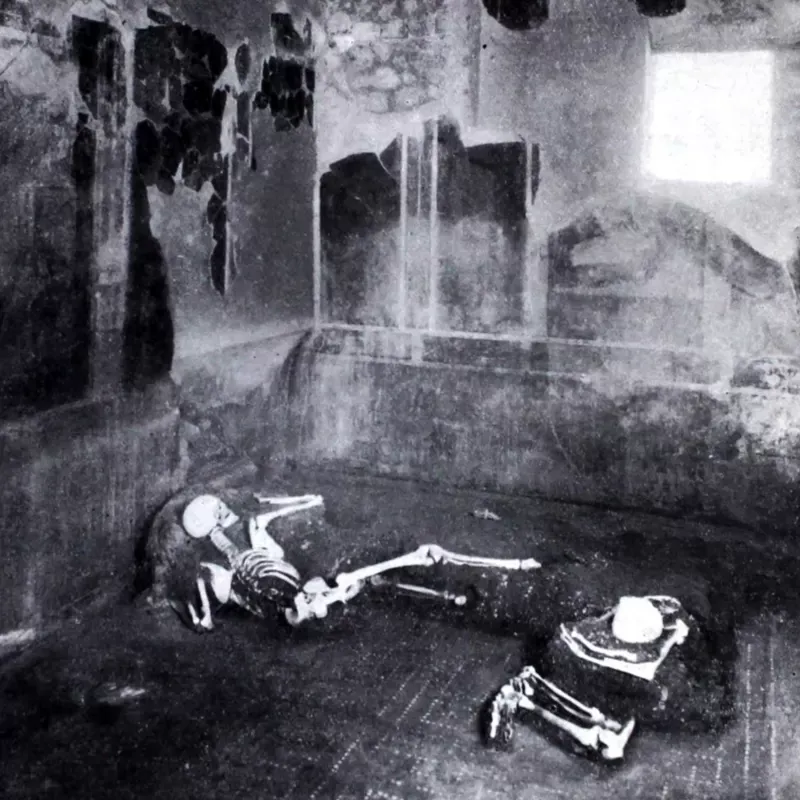They are considered “genetic secrets”.
Researchers studying human remains of PompeiiItaly, managed to extract genetic material from the bones of a man and a woman who remained caught in the eruption that buried that Roman city.
this first Pompeian human genome it is an almost complete set of “genetic instructions” from the victims, encoded in DNA extracted from their bones.
Ancient DNA was preserved in bodies that were covered in ash hardened by time. The findings were published in the journal Scientific Reports.
The two people were first discovered in 1933, in what Pompeii archaeologists have called Casa del Fabbro, or The Craftsman’s House.
They were trapped in the corner of the dining room, almost as if they were having lunch when the eruption occurred, on August 24, 79 AD.
A recent study suggested that the enormous ash cloud of the eruption of Mount Vesuvius could have become lethal for city dwellers in less than 20 minutes.
What did you find?
The two victims the researchers studied, according to anthropologist Serena Viva of the University of Salento, were not in a position to escape.
“Because of the position [de sus cuerpos] it seems that they were not running away”, Viva told the BBC. “The answer to why they didn’t flee could lie in their health conditions.”
Now clues have been revealed in this new study of his bones.
“It’s all about the preservation of the skeletons,” explained Professor Gabriele Scorrano, from the Lundbeck GeoGenetics Center in Copenhagen, who led the study.
“It’s the first thing we saw, and it looked promising, so we decided to give it a try. [a la extracción de ADN]”.
Both the remarkable preservation and the latest laboratory technology allowed scientists to extract a lot of information of a “really small amount of bone dust”, as Professor Scorrano explained.
“The new sequencing machines can read several complete genomes at the same time,” he continued.
Genetic study revealed that the man’s skeleton contained DNA of the bacteria that causes tuberculosissuggesting that he might have had the disease before his death.
And a bone fragment at the base of his skull contained enough Intact DNA to decipher your entire genetic code.
This showed that he shared “genetic markers,” or recognizable reference points in his genetic code, with other people who lived in Italy during the Roman imperial era.
But it also had a cluster of genes commonly found in those on the island of Sardinia, suggesting there might have been high levels of genetic diversity on the Italian peninsula at the time.

Professor Scorrano said there is much more to be learned from biological studies of Pompeii, including ancient environmental DNA, which could reveal more about biodiversity at the time.
“Pompeii is like a Roman island,” he added. “We have an image of a day in 79 AD”.
Viva added that each human body in Pompeii is “a treasure.”
“These people are silent witnesses of one of the best known historical events in the world“, said.
“Working with them is very emotional and a great privilege for me.”
Source: Elcomercio

:quality(75)/cloudfront-us-east-1.images.arcpublishing.com/elcomercio/6MZWGEY7IFCOBGFJ6JR54W4WKM.webp)

:quality(75)/cloudfront-us-east-1.images.arcpublishing.com/elcomercio/PYF6S4EKOVFH7IC27QWUIHBT6E.jpg)
:quality(75)/cloudfront-us-east-1.images.arcpublishing.com/elcomercio/OGLOBBOEJBDHHASSFNYZ7W7QRA.jpg)

:quality(75)/cloudfront-us-east-1.images.arcpublishing.com/elcomercio/A6VE6Y6CIRFJXHJBYAU33V64V4.jpg)
